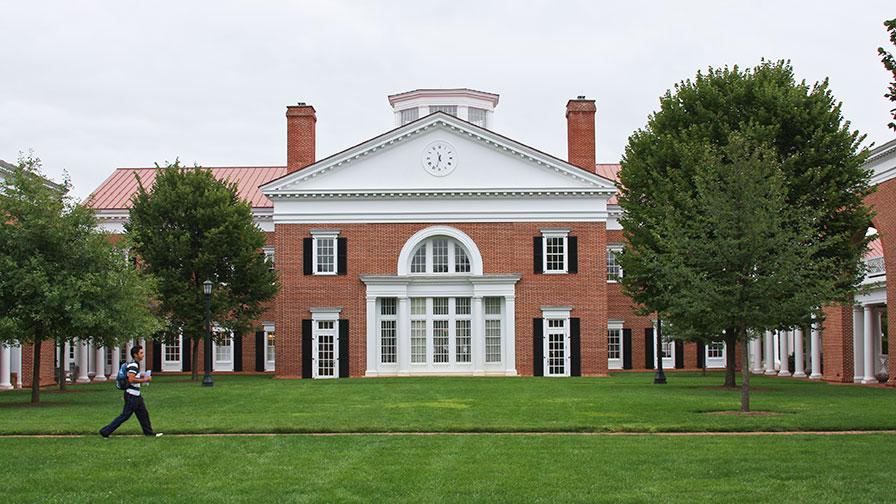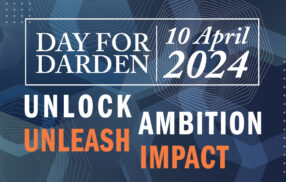
Classical Orchestra or Jazz Ensemble Corporate Innovation Requires Qualities From Both
Like finely tuned orchestras, large organizations carry out prescribed processes. They play the notes on the page rather than take an idea and riff on it, as a jazz band would. However, it’s exactly that kind of improvisation and flexibility that many big companies are trying to master, according to members of the Innovators’ Roundtable.
The group came together at the University of Virginia’s Rotunda on 28 February for a daylong discussion about workforce agility, global research-and-development strategy and the challenge of remaining innovative in a sluggish economy. The Roundtable, established by the Darden School’s Batten Institute for Entrepreneurship and Innovation, included senior executives from Corning, Siemens, Northrop Grumman, MeadWestvaco and CSC.
“The Roundtable is an unusual opportunity for executives from diverse industries to talk freely about their most pressing challenges,” said Sean D. Carr, the Batten Institute’s director of intellectual capital. “It also helps Darden professors develop research agendas that explicitly address the corporate innovation imperative.”
Some Roundtable members said that agility in their organizations comes from deep competencies and expertise, while others suggested that depth impedes flexibility, in part because technical experts might not be fully attuned to changing customer needs. Whereas some participants believed that agility could be scaled throughout a large organization — that the full orchestra could indeed learn to play jazz — others said that the very purpose of a control-centered organization runs counter to the notion of enterprise-wide agility.
You just don’t see a 60-piece jazz band, one participant noted. Some parts of the organization must be devoted to reliability and achieving economies of scale, while other parts — small teams — are charged with jazz-like exploration.
The central challenge, the participants noted, is finding the proper balance between flexibility and constraint. One said that too much emphasis is put on the “moment of invention” — which is just one aspect of the total innovation process — and not enough on the many organizational capabilities that turn an invention into a profitable business. As a result, companies might be going after flexibility and innovative capacities in a way that incurs costs and is not in shareholders’ best interests. An organization must be responsive enough to experience moments of invention and opportunity without being inundated with more ideas than it can vet. It is possible, one participant commented, to be saturated with innovation.
The innovation leaders described research and development (R&D) structures that reflect their attempts to balance their operating models with the quest for agility. All have geographically distributed R&D networks that include internal and external laboratories, universities and entrepreneurial ventures — some overseen by a strong central function, others completely decentralized. These R&D networks increase organizational agility by helping to identify and execute profitable opportunities more quickly. However, they also present various challenges, such as intellectual property loss, competition and duplication of effort between sites, language and cultural barriers, and onerous terms imposed by university partners.
Discussions at the Roundtable often turned to the use of social media as a way to mitigate some of the challenges to innovation as well as instill a bit of the jazz-band mentality. Members described internal websites, for example, which help bridge geographic distance, foster collaboration and rapid problem solving, and serve as expertise locators.
Topics raised for potential research initiatives and future gatherings included the underlying organizational factors that drive a company’s approach to agility, best practices in program management, how business models should change to reflect technological advances, and the business and operating models that create the right environment for innovation. The next Innovators’ Roundtable will be held in fall 2012.
The University of Virginia Darden School of Business prepares responsible global leaders through unparalleled transformational learning experiences. Darden’s graduate degree programs (MBA, MSBA and Ph.D.) and Executive Education & Lifelong Learning programs offered by the Darden School Foundation set the stage for a lifetime of career advancement and impact. Darden’s top-ranked faculty, renowned for teaching excellence, inspires and shapes modern business leadership worldwide through research, thought leadership and business publishing. Darden has Grounds in Charlottesville, Virginia, and the Washington, D.C., area and a global community that includes 18,000 alumni in 90 countries. Darden was established in 1955 at the University of Virginia, a top public university founded by Thomas Jefferson in 1819 in Charlottesville, Virginia.
Press Contact
Molly Mitchell
Associate Director of Content Marketing and Social Media
Darden School of Business
University of Virginia
MitchellM@darden.virginia.edu





